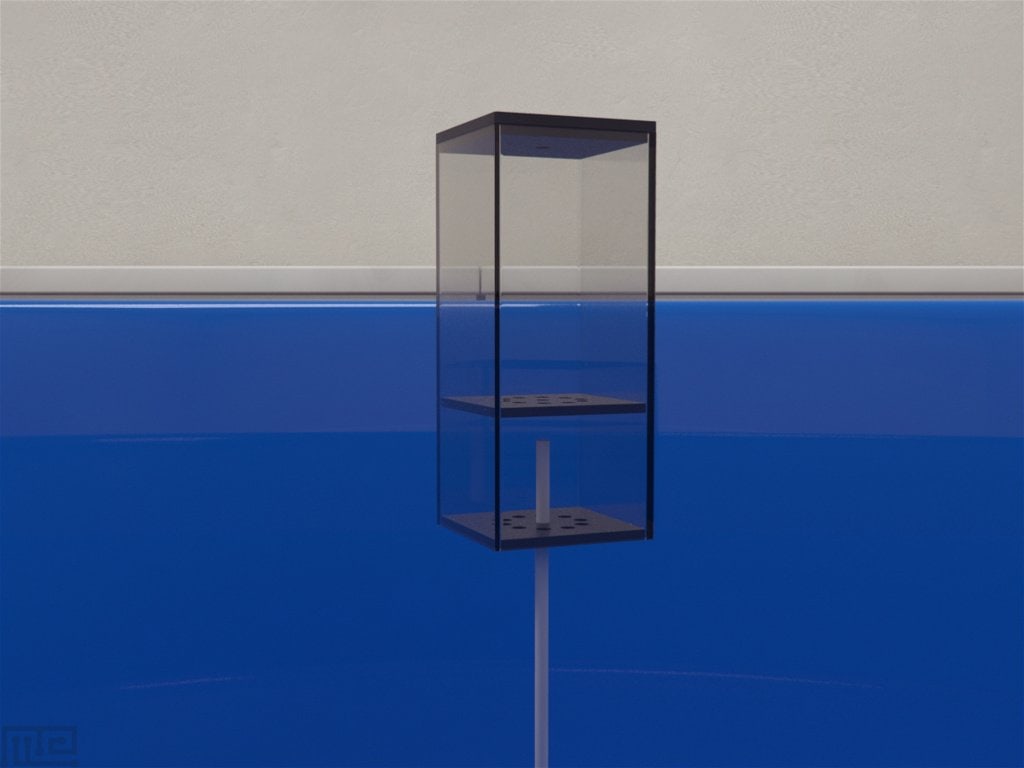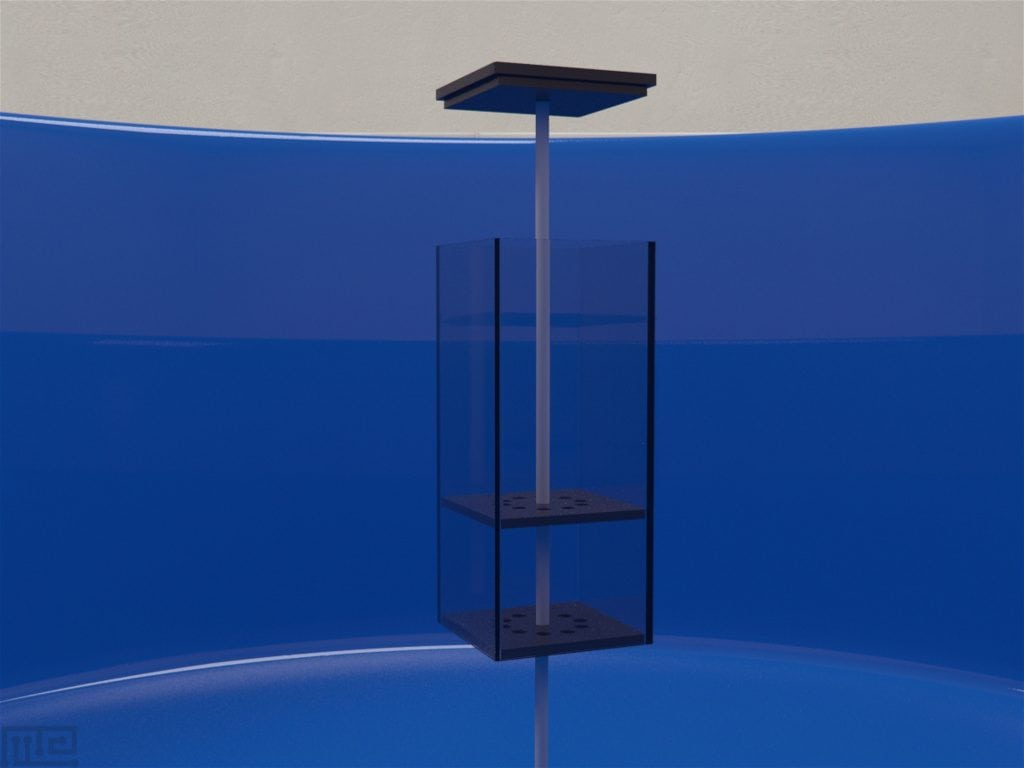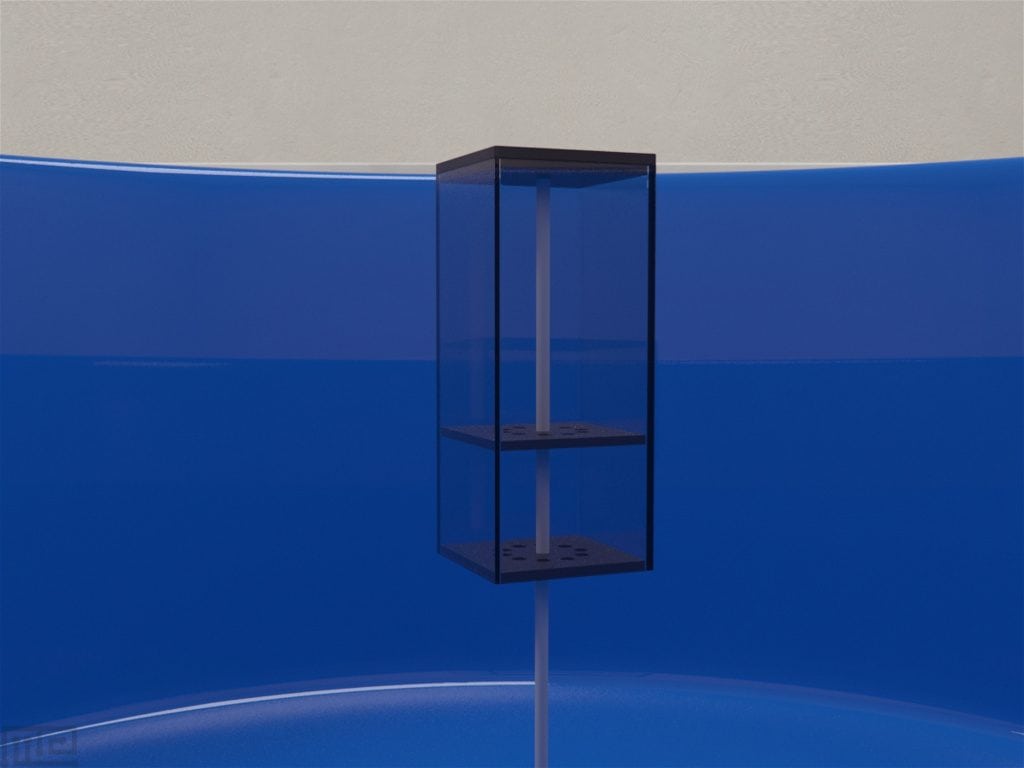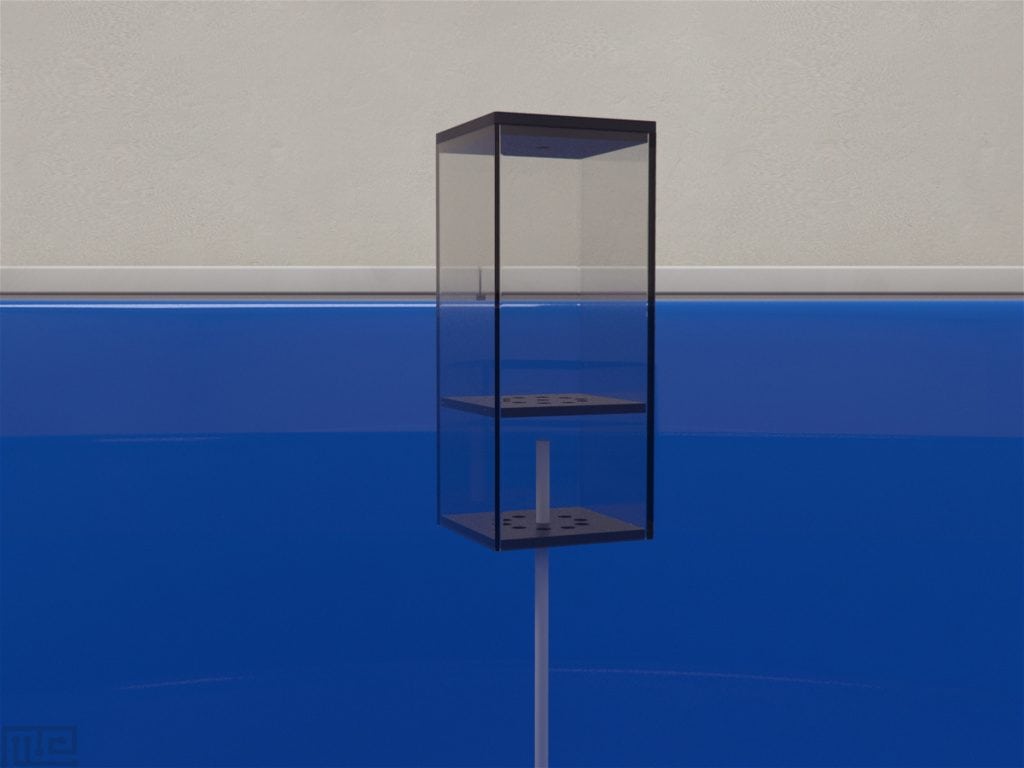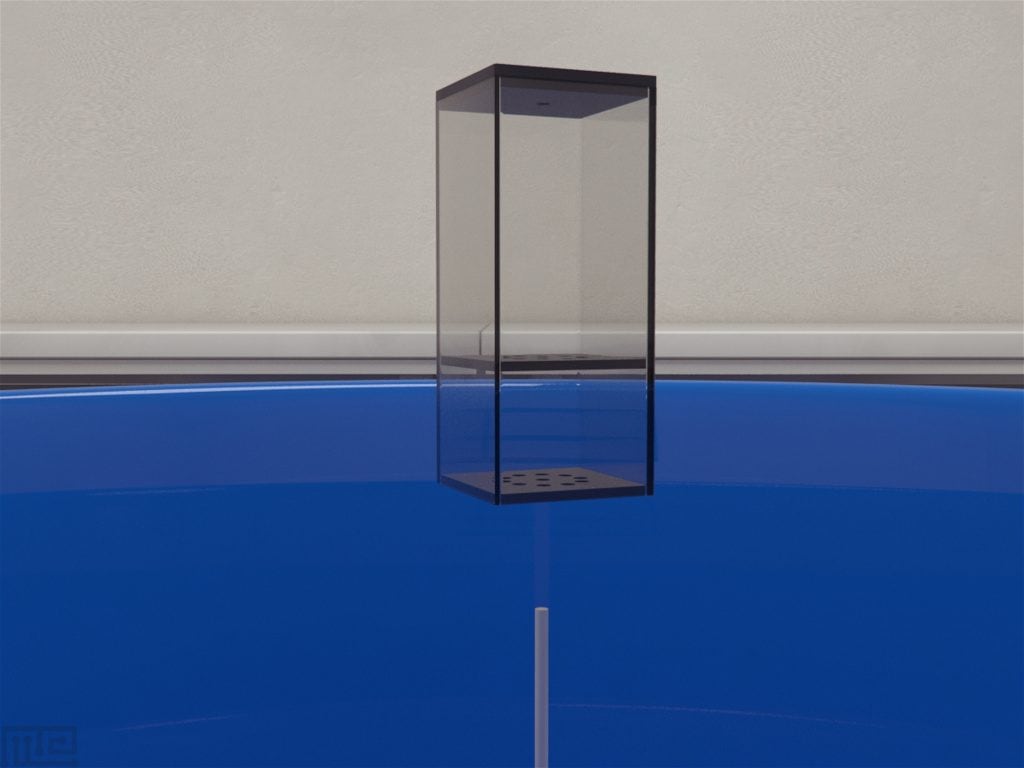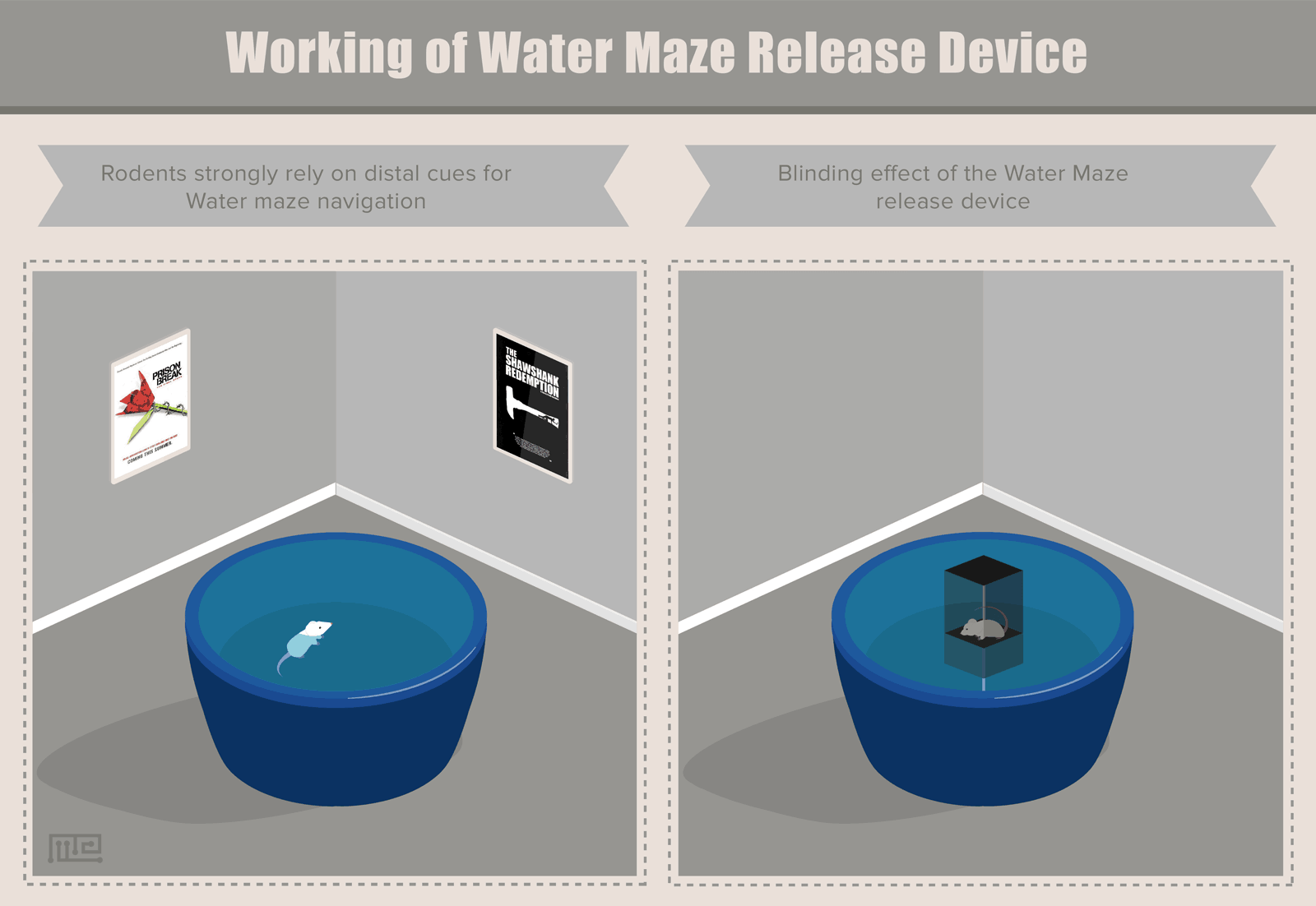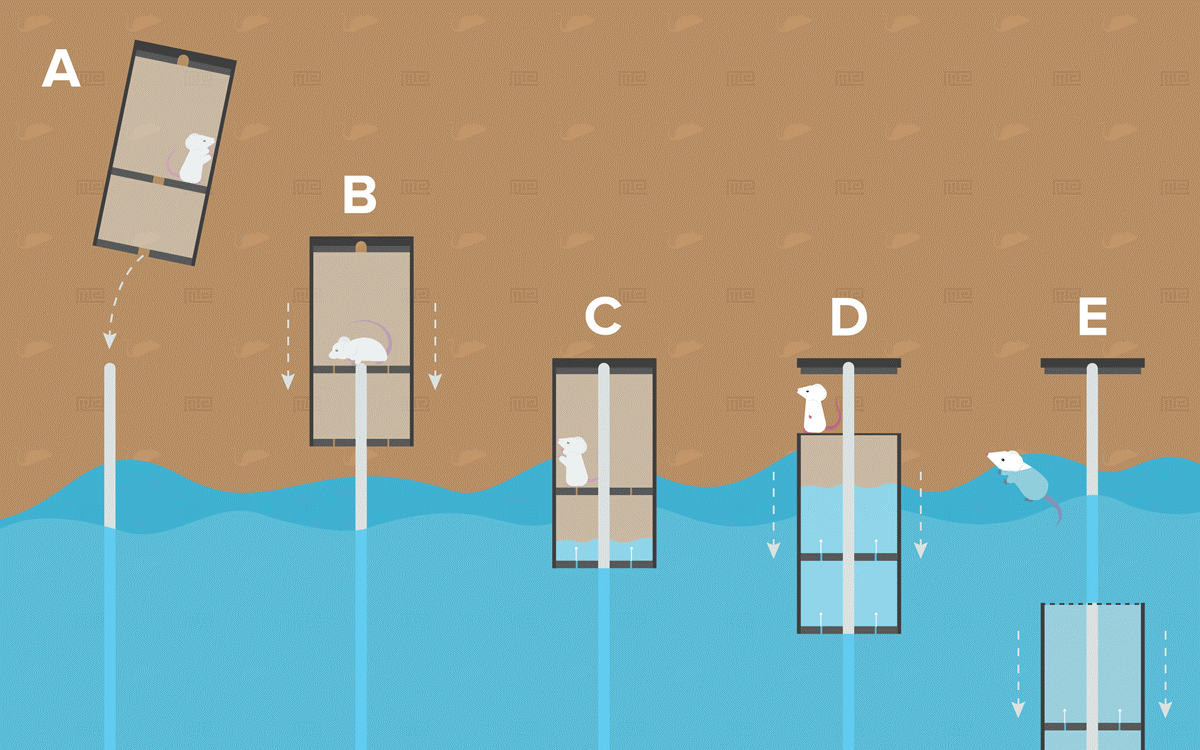Description
The MazeEngineers release device for the Morris water maze assists in blinding mice and rats to navigational cues in insertion into the morris water maze.
Comes in pack of two. Sizing for mice and rats available. Please inquire for more details
Price & Dimensions
Mouse
$ 690
For Modification- Pack of 2 release Devices
- Diameter: 10 cm
- Height: 25 cm
Rat
$ 990
Pack of 2- Pack of 2
- Diameter: 15 cm
- Height: 35 cm
Are you an academic scientist and creator?
Learn how your lab can tech transfer this and similar devices from your lab to industry.
Documentation
Introduction
The traditional Morris water task (Morris, 1984) has been at the forefront of decades of research on spatial memory and behavior among rodent classes. Many adjustments and modifications to the simple paradigm have given rise to a variety of tools that improve the Morris water maze’s straightforward design and widen the existing scope of spatial research. In particular, the water maze release device is yet another addition that offers a standard method of carrying out general MWM training and testing procedures.
The water maze release device (Phillips et al., 2013) provides an easy method of eliminating possible extraneous cues that a rodent is exposed to just before a trial is held. Specifically, the rodent is placed inside the release device as it is transported from its cage to the testing room and starting location in the apparatus. Once fixed onto the acrylic rod placed in the middle of the water maze, the device operates automatically, allowing the experimenter to leave the testing area without being observed.
Apparatus and Equipment
The water maze release device is an opaque cylinder consisting of a top and bottom chamber, with holes on its floor and a removable top lid. The rodent is placed in the larger top chamber. The small bottom chamber serves as a buffer for the entry of water once the release device is fixed and lowered into the water maze. The holes on the lower section allow the entry of the central vertical rod of the water maze.
Training Protocol
Initially, the rodent is transported from its cage to the testing room by placing it inside the opaque release device. The device is then slid slowly down onto a vertical rod which extends up above the water at the starting point inside the water maze, typically at the center. The vertical rod is snugly fitted into a socket under the lid of the device going through the holes on the lower section of the device.
The buoyancy and rate of inflow in the lower section of the device are designed to cause a gradual separation between the lower section and the lid as the device sinks slowly into the water, providing enough time for the experimenter to vacate the testing area.
As the lower section is filled with water, the rodent climbs up the cylinder and walks around its rim. Gradually the lower section is submerged, and after approximately 45 to 50 seconds, the whole device sinks under the surface of the water, forcing the rodent to navigate the water maze allowing minimal time to locate the extra-maze cues.
Strengths & Limitations
The water maze release device facilitates general training and testing procedures of the Morris water maze paradigm and its variants. The tool presents a standard and convenient way of placing the rodent in the testing apparatus, as well allowing the experimenter to leave the testing area before the trial begins. Further, the opaque release device reduces stress before entry into the water maze.
Summary and Key Points
- The water maze release device is a convenient tool that provides an easy and standard method of transporting the rodent from the cage to the testing area and finally to the water maze apparatus during the start of trials
- It can be used for the traditional Morris water maze task (Morris, 1984) and its many variants
- The water maze release device is an opaque cylinder with a top and bottom chamber, with holes on its floor and a removable top lid
- It is fixed onto a vertical rod in the water maze and is gradually lowered and filled with water
References
Morris, R. (1984). Developments of a water-maze procedure for studying spatial learning in the rat. Journal of neuroscience methods, 11(1), 47-60.
Phillips, J. B., Youmans, P. W., Muheim, R., Sloan, K. A., Landler, L., Painter, M. S., & Anderson, C. R. (2013). Rapid learning of magnetic compass direction by C57BL/6 mice in a 4-armed ‘plus’ water maze. PloS one, 8(8), e73112.

